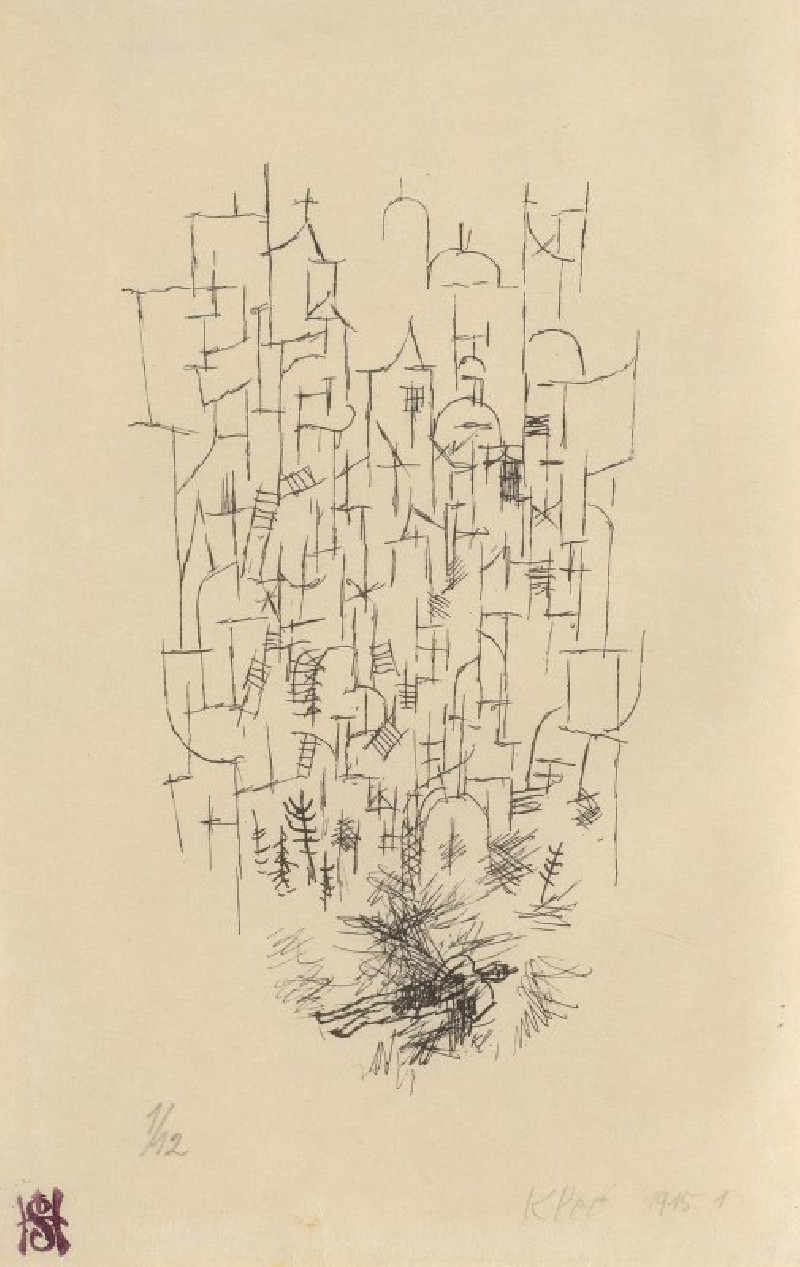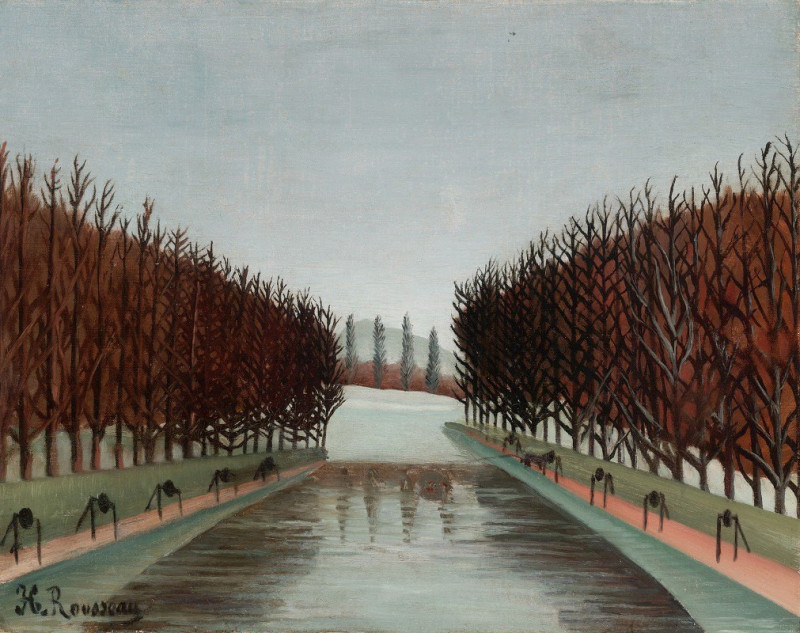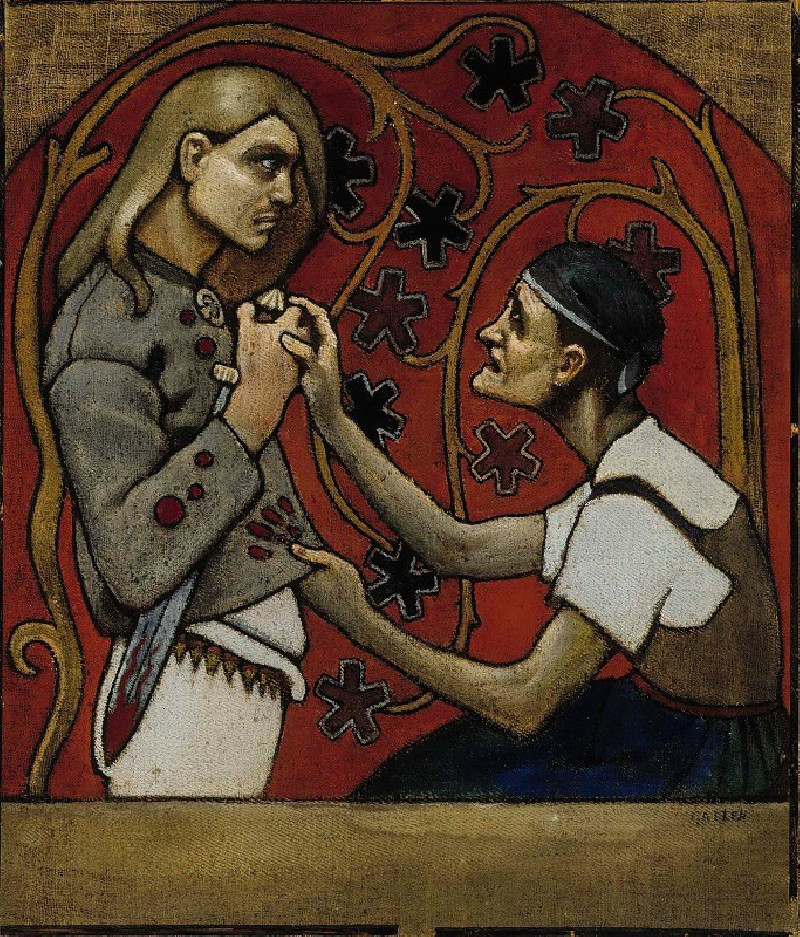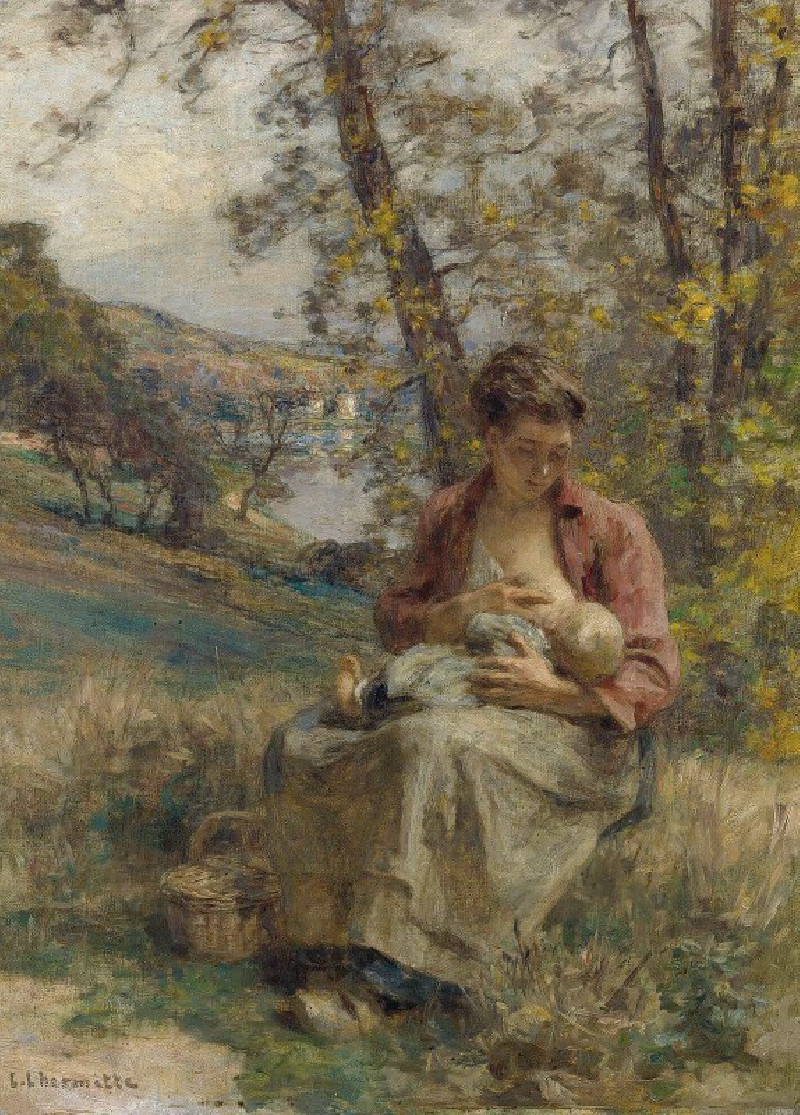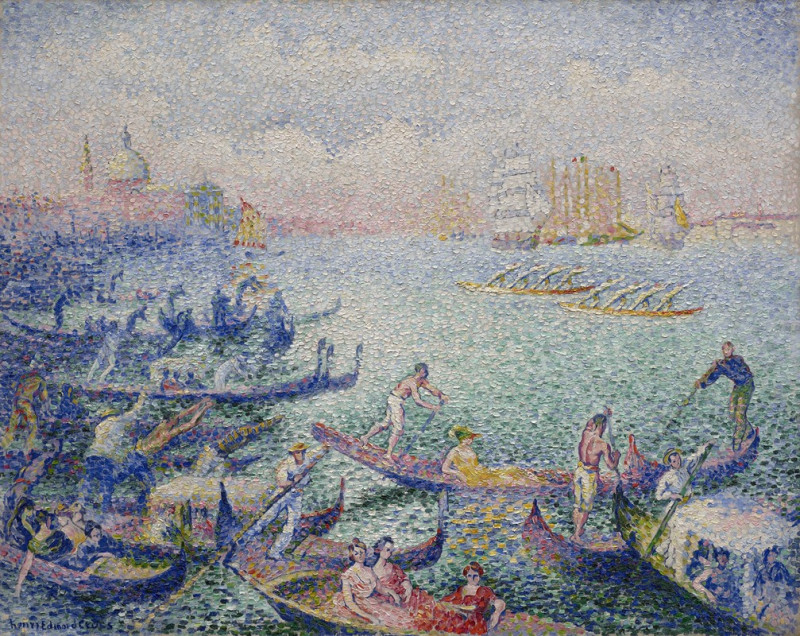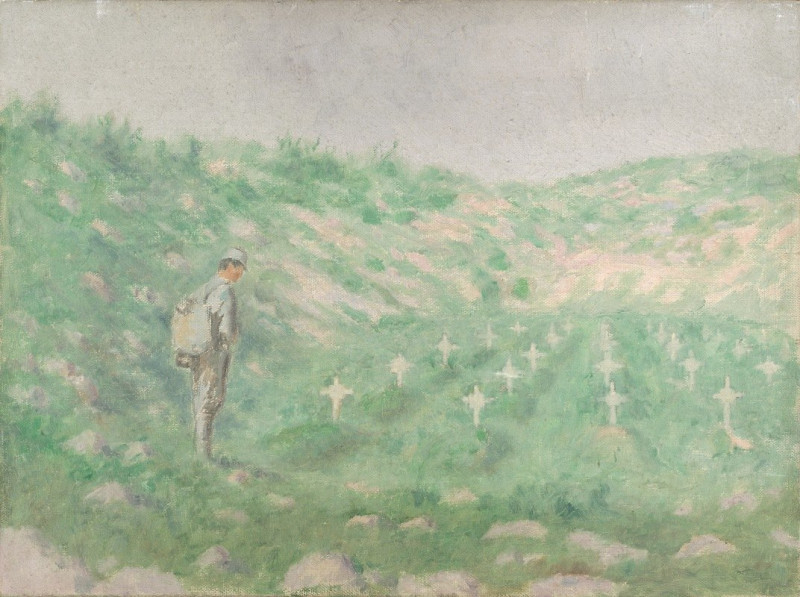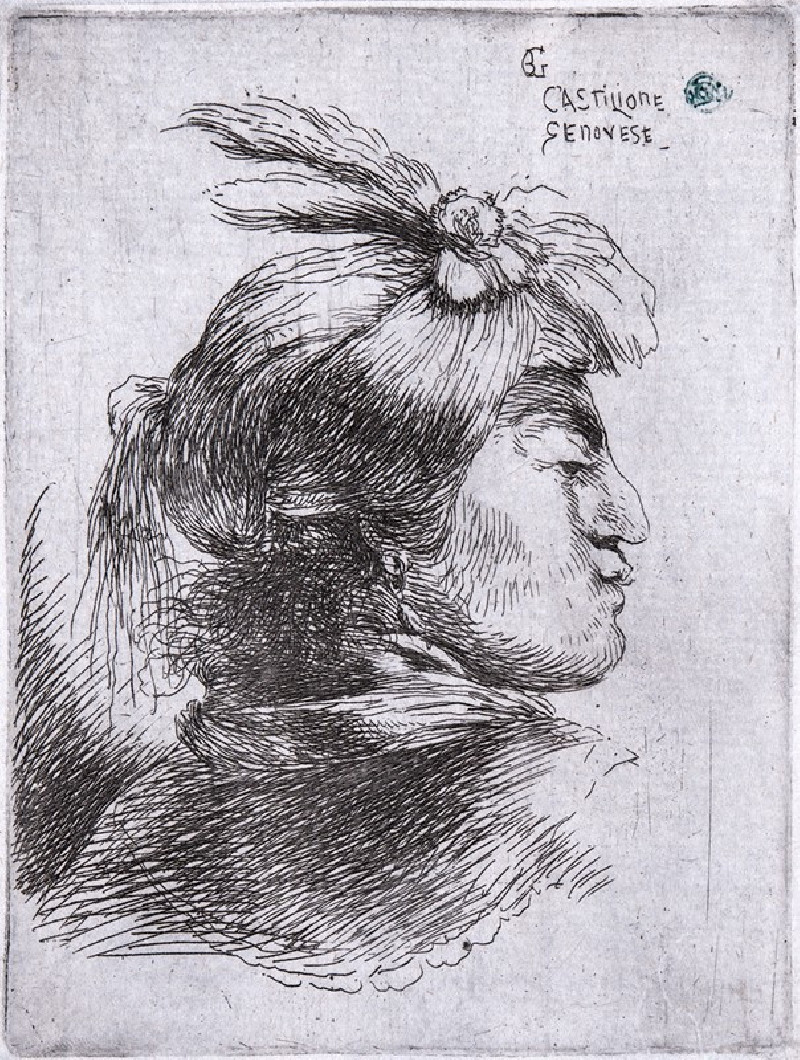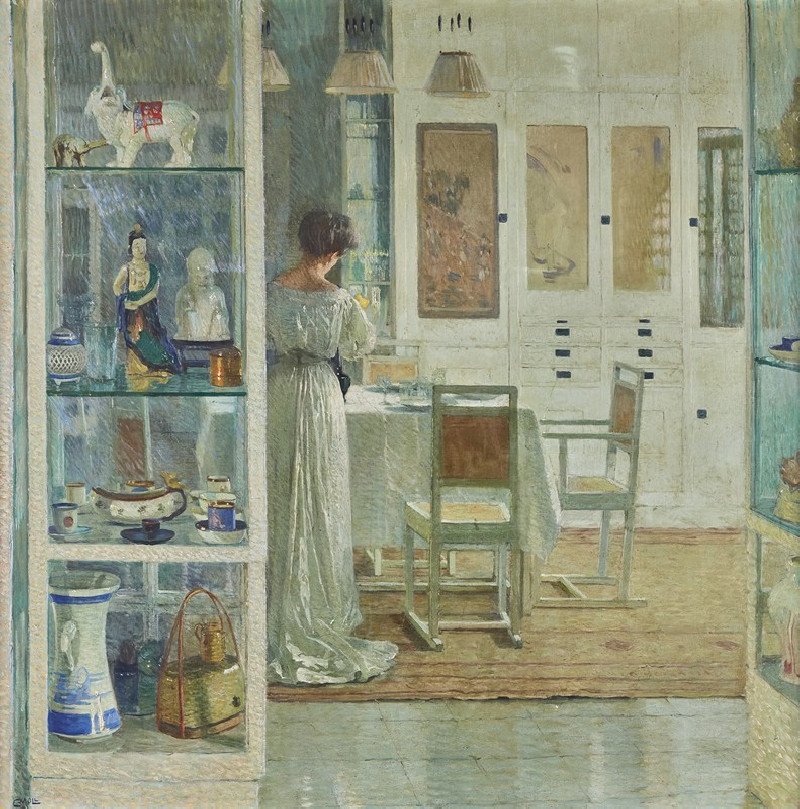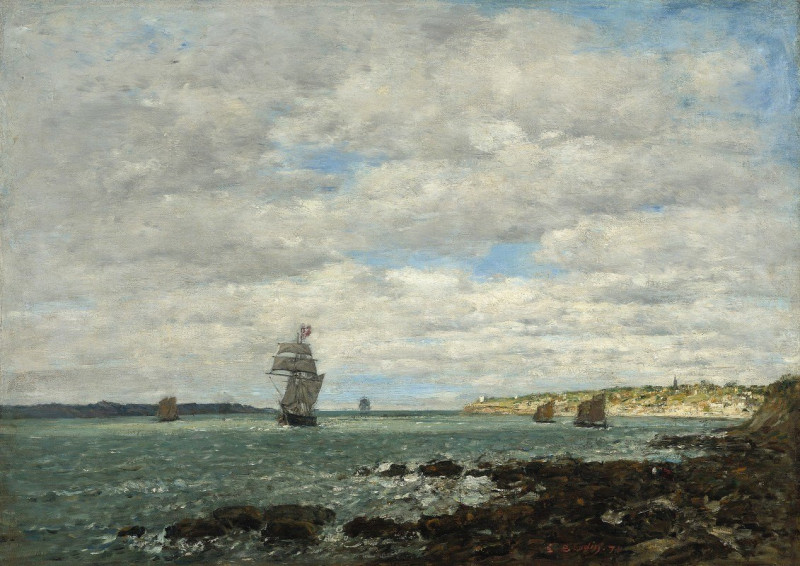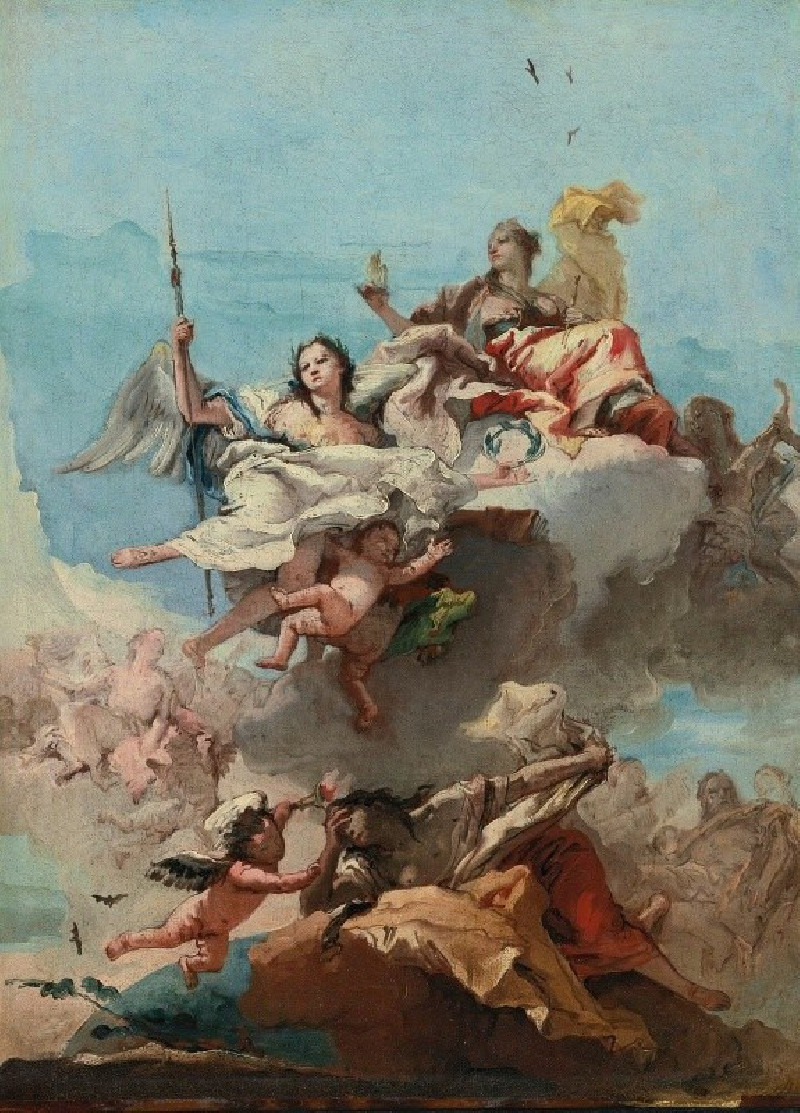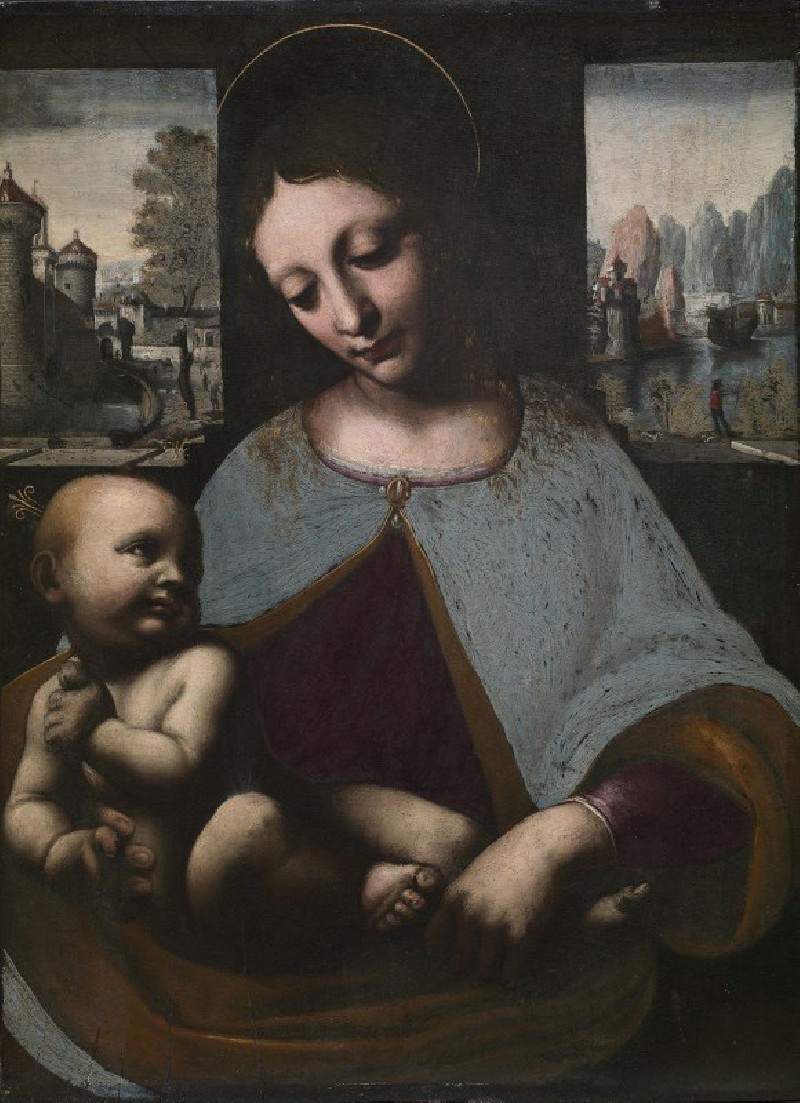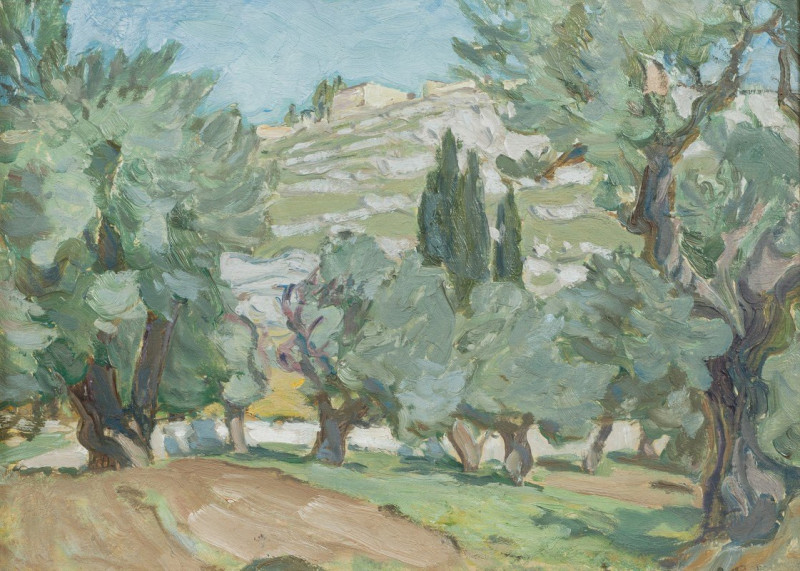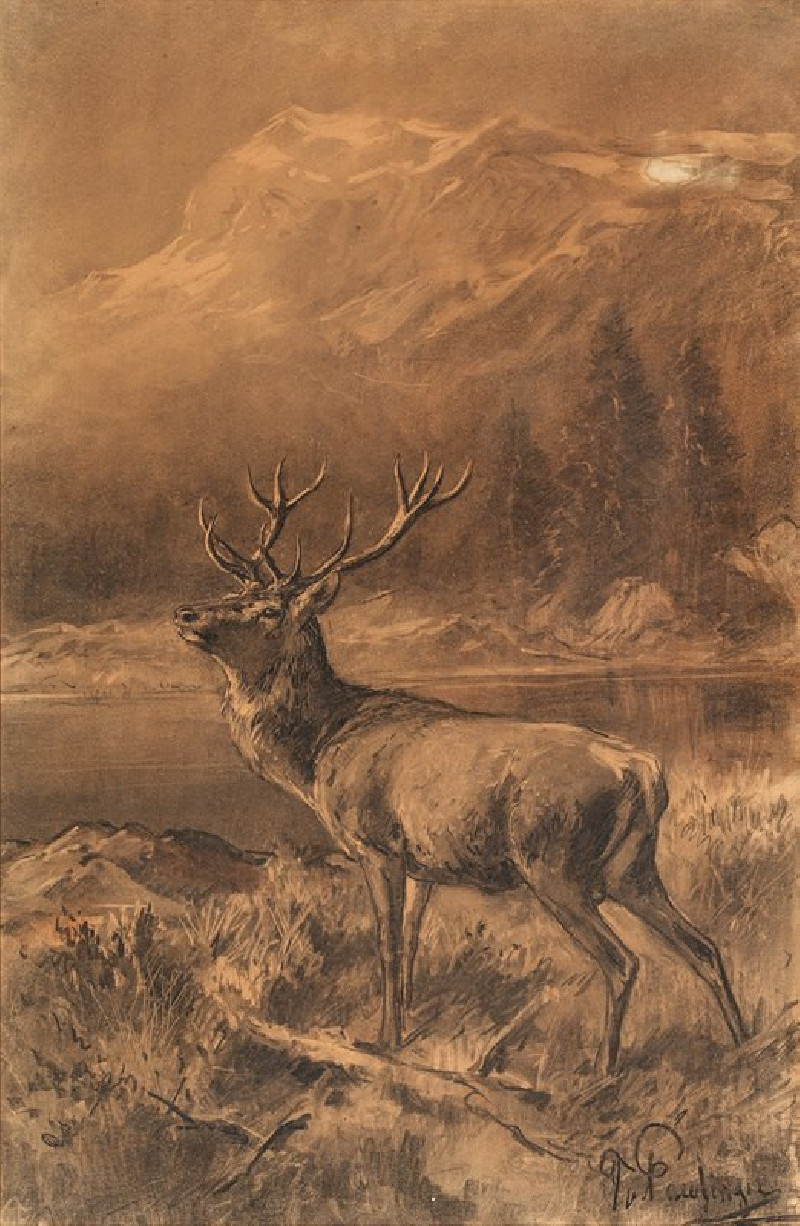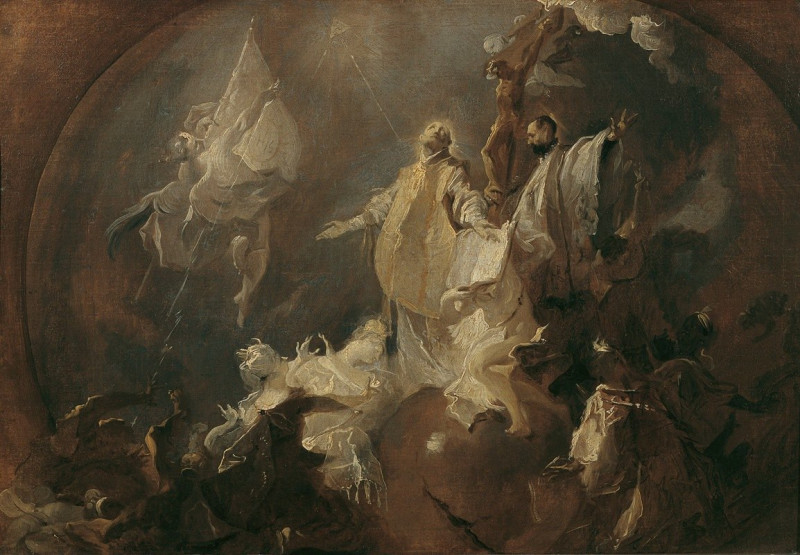Der Tod für die Idee (1915)
Technique: Giclée quality print
Recommended by our customers
More about this artwork
"Der Tod für die Idee" (1915) by Paul Klee is an evocative etching that speaks powerfully through its simplicity and abstract forms. This artwork, translating to "Death for the Idea," manifests Klee's expression of complex themes using minimalistic symbols and line work, characteristic of his style during the early part of the 20th century.The composition is constructed with a series of overlapping lines and geometric shapes that converge to form what appears to be an urban landscape, bustling yet somewhat chaotic. At the center of this dense array lies a darker, more distinct form that resembles a tangled figure or a mess of foliage. This central motif starkly contrasted against its background, might symbolize the peril or sacrifice inherent in the pursuit or defense of an idea.Klee, known for his unique pictorial language and philosophical approach to art, often delved into abstract concepts about human existence, introspection, and the metaphysical. In "Der Tod für die Idee," the stark black lines against the muted background can be perceived as a metaphor for the inevitable clash between the burgeoning ideas and the harsh realities they come up against.This piece not only reflects Klee's introspective nature but also invites the viewer to ponder the depths of sacrifice for intellectual and ideological pursuits.
Delivery
Returns
Paul Klee was a Swiss-born German artist. His highly individual style was influenced by movements in art that included expressionism, cubism, and surrealism. Klee was a natural draftsman who experimented with and eventually deeply explored color theory, writing about it extensively; his lectures Writings on Form and Design Theory (Schriften zur Form und Gestaltungslehre), published in English as the Paul Klee Notebooks, are held to be as important for modern art as Leonardo da Vinci's A Treatise on Painting for the Renaissance.

